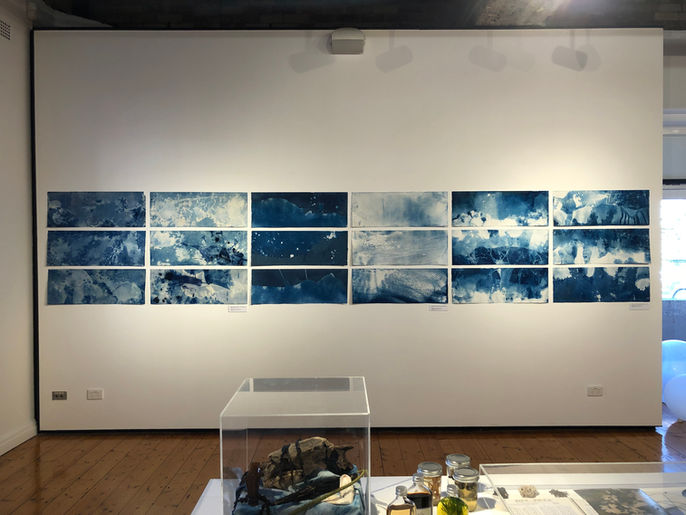LUNAR CYCLES
Curatorial Rationale
‘We know time only indirectly by what happens in it, by observing change and permanence . . .’ (Kubler 2013, p.29), raising the question, if nothing is experienced is time actually happening? My exhibition investigates this question and explores the relationship between time, experience, change, control, and chance; the underpinning concepts of my practice for the past four years.
‘
. . . [We] are all bound by time . . .’ (Kent 2012, p.37) and yet each of us experiences time in individual ways (Zenji 2013, p.51). Within our individual experiences of time, we can intervene during perfect moments, and cause profound changes and new possibilities, remaking both time and human experiences (Chan 2013, p.53). However, humans do not have total control over time, chance also plays its part. The addition of chance demonstrates how control is only an illusion, prompting us to let go of the belief that we are in control of time and fundamentally our lives.
Lunar Cycles and Tidal Forces; are each bound to one of the underpinning concepts. In Lunar Cycles, the moon represents change, a constant force pushing and pulling on time and our experiences. Whereas the tides in Tidal Forces, represents time, continually being reshaped due to ‘. . . profound change[s] or rupture[s] of some kind . . .’ (Chan 2013, p.53).
Lunar Cycles reflects my continued exploration of circles, initially employed as representations of the mind and my own mental health. Within Lunar Cycles the circular shapes have emerged as physical representations of the moons eight phases, and as the conceptual representation of how change remakes time.
Lunar Cycles incorporates animation, and the alternative photographic processes of chemigrams and lumen prints. The chemigram process involves forming an image by painting darkroom chemicals onto light-sensitive photographic paper. Additionally, resists are applied to the paper to slow down the paper’s development, creating varying patterns and colours. Lumen prints are solar photograms, in which organic material is placed on unexposed photographic paper and then placed in the sun. Sunlight shines on the paper and through the organic material, creating an image of the object. If left unfixed continued light exposure will cause the image to continually evolve and change.
Chemigrams were chosen as the chemigram imagery I produce suggests visions of planets, and galaxies, creating a connection between the moon and the imagery. Additionally, when chemigrams and lumen prints are not fixed properly, exposure to light can continually alter their appearance, demonstrating how human intervention and chance experiences can potentially change an object or person and reform time (Chan 2013, p.53).
Lumen prints are not fixed at all, and therefore, change at a rapid pace, whereas chemigrams change over a longer period. As such, the chemigrams were exposed to differing levels of light over 6-8 weeks, with weekly scans documenting any changes. The lumen prints, however, were created, scanned, and then deprived of any light. Displaying the original scans and the original lumens together in the exhibition, enables the viewer to witness the unfolding changes. By exhibiting the original scans, and the original chemigrams and lumen prints, each work is bearing witness to its own individual passage of time. Furthermore, an animation will be created using the chemigrams, to form an illustration of the moons journey through time and each of its phases.
Installation
Artworks































